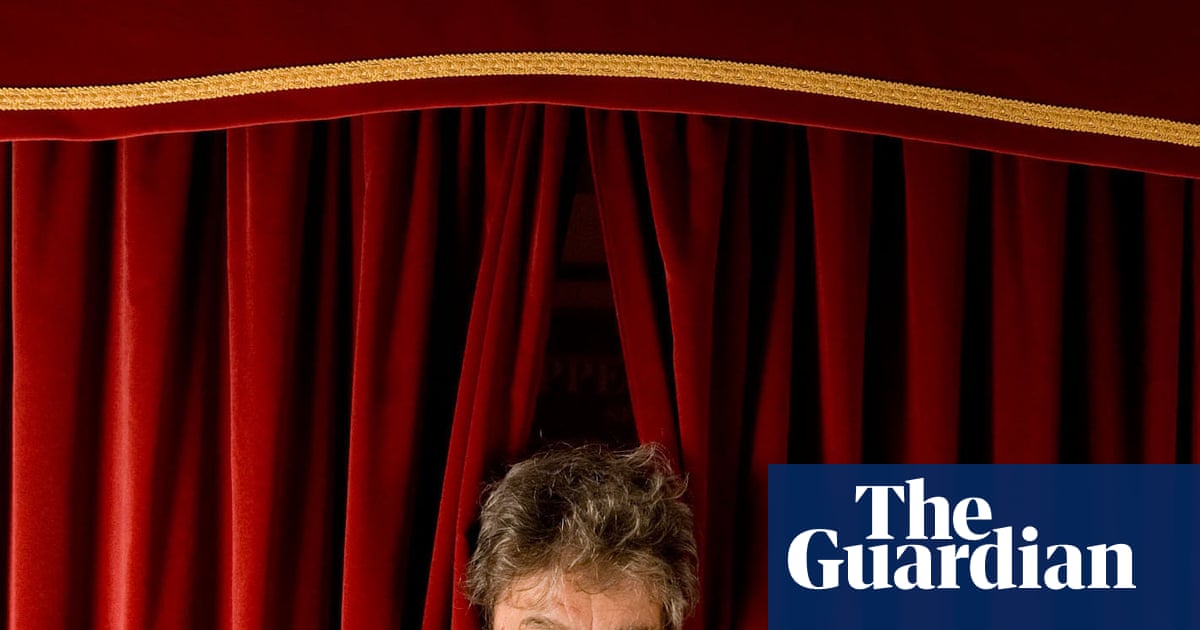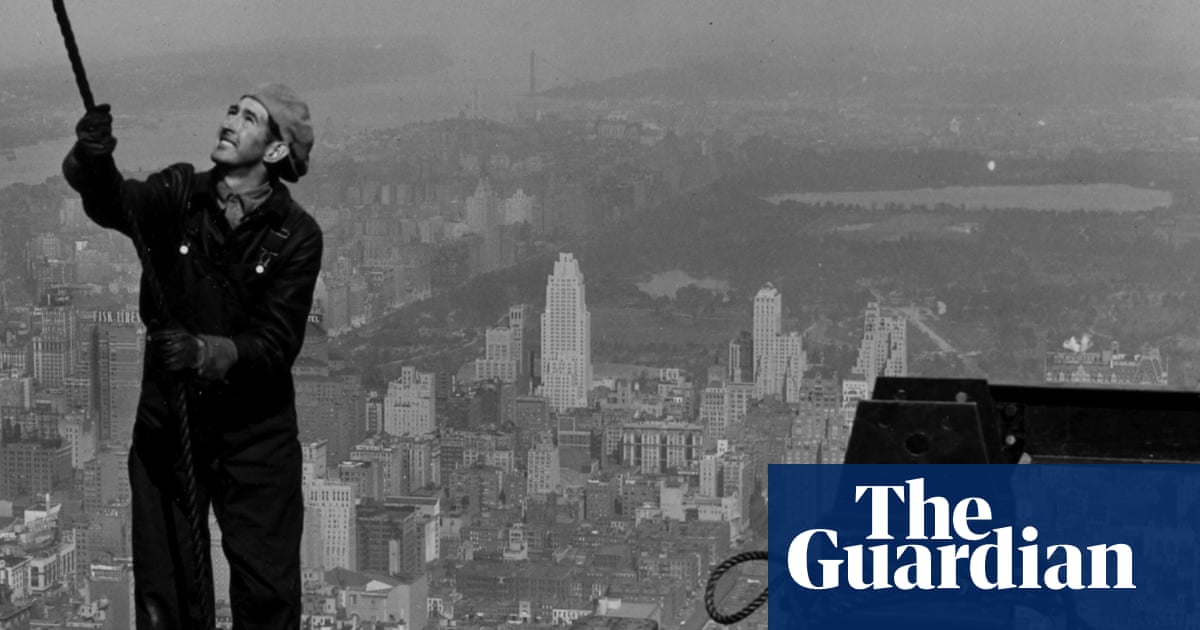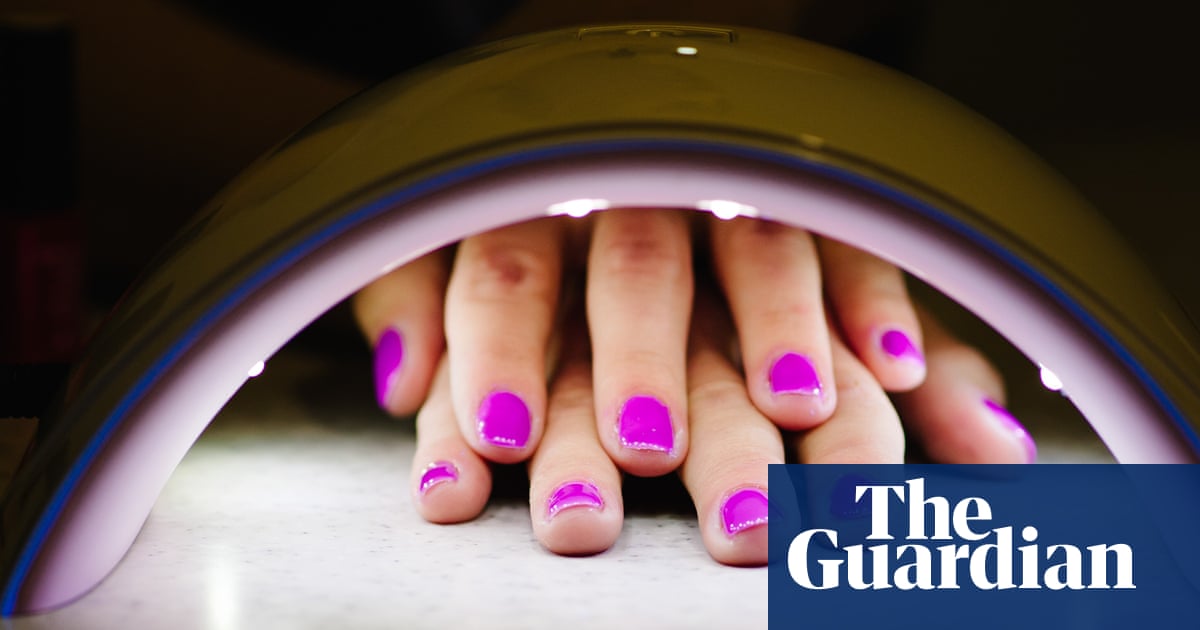On a recent autumn evening in Düsseldorf’s Kunstpalast museum, the guide Joseph Langelinck paused next to a Renaissance sculpture of a man with a wooden club and challenged his flock of 18 visitors to name the mythical hero depicted.
“Hercules?” a woman in the front row proposed in a soft voice. “If you know the answer, why can’t you tell us in a way that those at the back can hear you, too?” Langelinck admonished the visitor, before challenging her to name the 12 labours in chronological order. A non-answer elicited an eye roll and a tut. “Oh god, I feel like I’m back at school,” sighed the woman, 62-year-old Corinna Schröder.
The museum advertises Langelinck’s tours, which cost €7, as “grumpy” and “highly unpleasant”, though that might still be an understatement. Over the course of the 70-minute walk, the ponytailed art historian points fingers into visitors’ faces, tells them off for checking their phones or sitting down, and berates them for their general ignorance, all while stomping through the palatial corridors of the Kunstpalast at breakneck speed.
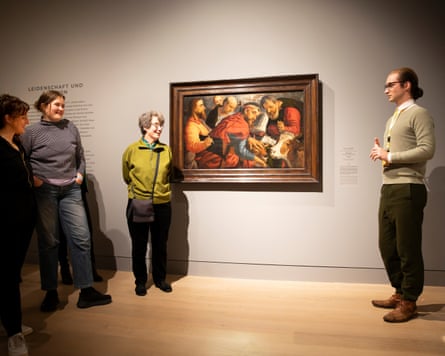
In spite of the rudeness, or perhaps because of it, the twice-monthly “Grumpy Guide” tour has been a surprise hit, with each one since the launch in May sold out. Anyone looking to book a spot will have to wait until next year.
“I never insult visitors directly, based on their personality or their appearance, but I insult them as a group,” said Carl Brandi, 33, the performance artist who conceived of and performs as the aggressive Langelinck. “My contempt is directed at an inferred ignorance that may not even exist. But I try to make them feel as ignorant as possible.”
Asked to explain the tour’s popularity, Brandi said people “enjoy the emotional ride”. “We all know comedy or cabaret formats where the performer’s bad mood or aggressive attitude is key to the show, it’s just not something we’re used to seeing in museums. And unlike in a comedy show, there’s no barrier between the character and the audience here,” he said.
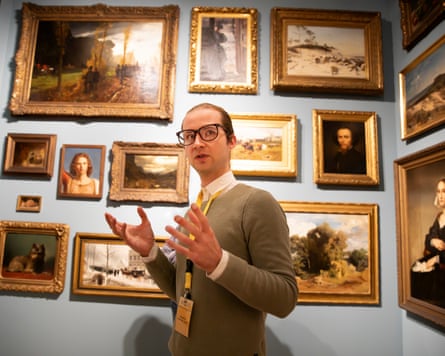
The Kunstpalast director, Felix Krämer, was inspired to commission Brandi’s act partly by the viral success of “rude waiter” restaurants, such as Karen’s Diner, in Sydney, or Rome’s Cencio la Parolaccia, though impolite service staff are hardly an alien concept on the banks of the Rhine. Waiters at brewery pubs in Düsseldorf and neighbouring Cologne, colloquially known as Köbesse, are known for their brash wit.
“There are many parts of Europe where you get something like a local pride in your native bad-mood tradition,” Brandi said. The Austrian playwright Peter Handke’s 1966 “anti-play” Offending the Audience, in which an actor challenges the public’s “thoughtless thinking”, was a more highbrow reference point.
Under pressure to justify subsidies and state support, museums across Europe are looking for novel ways of attracting different and younger audiences via non-elite formats: Stuttgart’s House of History hosts nudist evenings in which visitors can stroll naked among the exhibits, and the Netherlands’ Museum Voorlinden offers socks-only tours for those who want to appreciate works of art in shoeless silence.
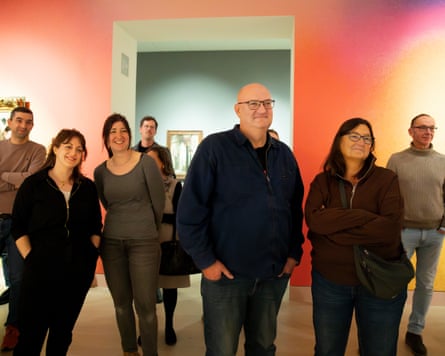
The Langelinck character both caters to and subverts such curatorial fashions, for the thought of art as entertainment is one of the many things that disgust him. At the entrance to the Kunstpalast’s permanent collection, visitors are encouraged to take pictures and share them on social media, and to question the distinction between high and low art. “From Aldi to Rubens,” says one wall text set against neon colours. Throughout the museum, oil paintings are juxtaposed with everyday objects, including chairs, glass trinkets and an original Volkswagen Beetle – a tendency that infuriates the ill-tempered guide.
As he races from exhibit to exhibit, his disgruntlement shifts from the visitors to the museum and its curators. Brandi has fitted his character with a backstory: he is a distant relation to Johann Wilhelm von der Pfalz, the Elector Palatine, from whose vast collection most of the artworks on display at the museum are drawn. Langelinck’s bitterness, the audience soon realises, comes from a sense of wounded personal pride.
after newsletter promotion
“You may as well have walked into a furniture shop,” he howls at one display of chairs. The side-by-side hanging of Ellen Louise Clacy’s 19th-century oil painting of the Great Plague and Eadweard Muybridge’s near-contemporary early photographs of humans and animals in motion are dismissed as a platitude, designed for shares on social media.
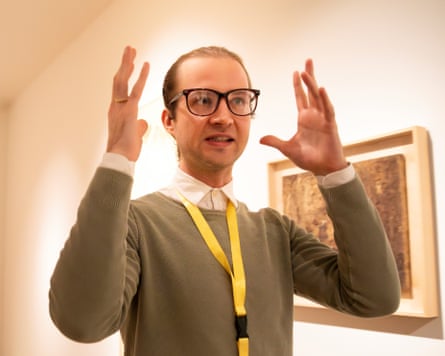
By the end of the tour, Langelinck appears on the verge of a personal breakdown, apoplectically ringing the bell inside a plaster belltower made by the artist Inge Mahn in 1971.
Brandi said: “In fine art museums there is always a kind of power imbalance between the museum’s assertion that ‘we can decide what is worth seeing here’ and the visitors, who more or less have to comply.
“And to turn this power imbalance on its head and say what some people might believe anyway when they go to a museum – that the museum has no idea, they’re just showing you anything – I think people find that refreshing.”
After 70 minutes of being snapped and shouted at, most visitors agreed. “I thought it was very funny and clever,” said Lothar Richter, 68, who had made a spontaneous visit to the gallery and tagged along on the tour. “The way he criticised the curation of the museum was ingenious.”
Schröder enjoyed the evening too, in spite of her ticking off. Which is not to say she is keen to repeat the experience. “Maybe next time I visit the museum I will just go for fun.”

 4 weeks ago
21
4 weeks ago
21
